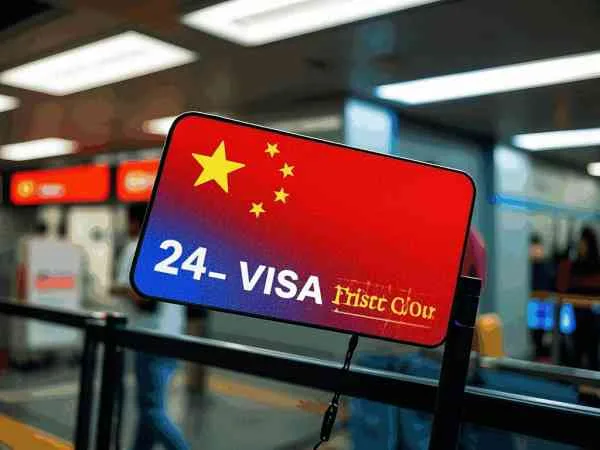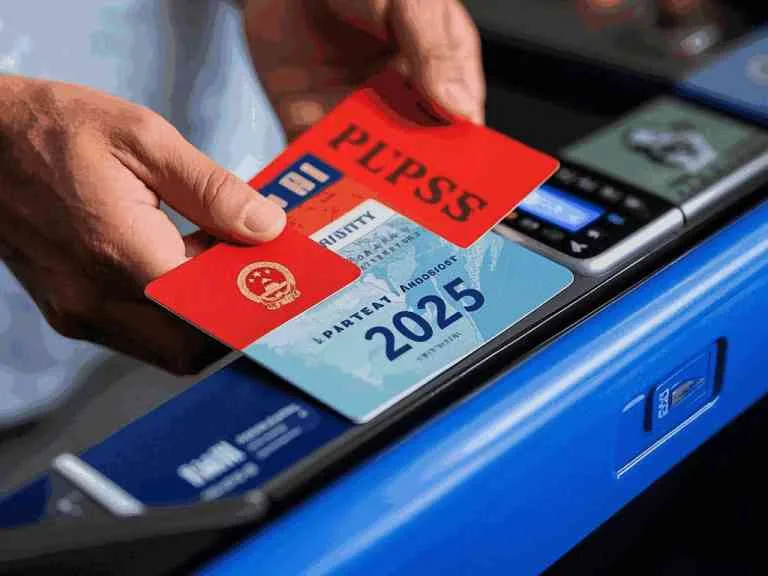Navigating China’s visa-free transit policies can be a cost-effective and convenient way to explore the country during layovers. This guide breaks down the eligibility requirements, application steps, and key details for Americans to leverage China’s visa-free transit options in 2025.

1. Understanding China’s Visa-Free Transit Policies
China offers two primary visa-free transit programs for international travelers: the 144-hour and 240-hour policies. These allow eligible foreigners to enter China without a visa for short-term stays, provided they meet specific transit criteria.
- 144-hour visa-free transit: Available in 24 provinces and cities, including Beijing, Shanghai, and Guangdong.
- 240-hour visa-free transit: Expanded in 2024, this policy now covers 24 provinces and 60 entry ports, offering a 10-day stay window for eligible travelers.
Key takeaway: Both policies require travelers to transit through China to a third country (e.g., flying from the U.S. to Singapore via Shanghai).
2. Eligibility Requirements for Visa-Free Transit
Nationality
- Americans qualify for both 144-hour and 240-hour visa-free transit programs, as the U.S. is among the 54 eligible countries.
Travel Documentation
- Valid passport: Must have at least 3 months of validity remaining and blank visa pages.
- Confirmed onward tickets: Proof of a connecting flight, train, or cruise to a third country/region within the permitted transit period (e.g., a flight from Shanghai to Tokyo within 144 hours).
Restrictions
- Past violations: Travelers with records of illegal entry, overstays, or employment in China within the past 5 years may be denied entry.
- Geographic limits: Your stay must remain within the designated regions (e.g., Guangdong Province for 144-hour transit).
3. Step-by-Step Application Process
Step 1: Confirm Your Transit Route
Ensure your itinerary complies with China’s transit rules:
- Entry and exit ports: Use approved ports like Beijing Capital International Airport, Shanghai Pudong Airport, or Guangzhou Baiyun Airport. For 240-hour transit, you can exit through any of the 60 designated ports.
- Third-country destination: Book a confirmed ticket to a destination outside China (e.g., departing Shanghai for Seoul after a 5-day stay).
Step 2: Prepare Required Documents
- Passport: Ensure compliance with validity and page requirements.
- Onward travel proof: Printed itinerary or e-ticket showing departure within 144/240 hours.
- Accommodation details: Hotel bookings or an invitation letter (optional but recommended).
Step 3: Arrival and Immigration Procedures
- Declare your transit intent: Inform airline staff during check-in to ensure they notify Chinese immigration authorities.
- Submit documents at entry: Present your passport, onward ticket, and completed Temporary Entry Form (provided on arrival).
- Clear immigration inspection: Answer questions about your travel plans succinctly.
Note: No prior online application is needed—approval is granted at the port of entry.

4. Permitted Activities and Regions
Where Can You Go?
- 144-hour transit: Stay within the designated province (e.g., Guangdong, Shanghai municipality).
- 240-hour transit: Travel across 24 provinces, including Beijing, Sichuan, and Yunnan, with cross-provincial travel allowed.
Popular destinations:
- Beijing (Great Wall, Forbidden City)
- Shanghai (the Bund, Yu Garden)
- Guangdong (Guangzhou’s Canton Tower, Shenzhen’s tech hubs)
Activities Allowed
- Tourism, business meetings, and short-term visits.
- Prohibited activities: Employment, journalism, or religious preaching without proper visas.
5. Critical Rules to Avoid Penalties
Stay Within Time Limits
- Overstaying even by an hour can result in fines, deportation, or future entry bans. Set reminders for your departure date.
Accommodation Registration
- Hotels: Most will handle registration automatically.
- Private stays: Register with local police within 24 hours of arrival if staying at a residence.
Geographic Compliance
- Do not venture outside permitted regions. For example, if entering via Shanghai for 144-hour transit, avoid traveling to neighboring Jiangsu unless explicitly allowed.
6. Common Pitfalls and How to Avoid Them
Mistake 1: Invalid Onward Travel Proof
- Ensure your connecting ticket shows a confirmed seat and departure within the permitted window. Open-ended tickets are not accepted.
Mistake 2: Passport Issues
- Renew your passport if it expires within 3 months or lacks blank pages.
Mistake 3: Overambitious Itineraries
- Avoid cramming multiple provinces into a 144-hour stay. Stick to one region to comply with geographic restrictions.

7. Frequently Asked Questions
Q: Can I extend my visa-free stay?
- No. Extensions are only granted for emergencies (e.g., medical issues) through local Public Security Bureaus.
Q: Can I leave and re-enter China under this policy?
- No. Visa-free transit permits single entry only.
Q: Are family members eligible?
- Yes, if they meet the same requirements (e.g., valid passports and onward tickets).
8. Tips for a Smooth Experience
- Print backup copies of your travel documents.
- Use reputable airlines: They’re familiar with transit procedures and can assist with documentation.
- Consult travel agencies: Companies like China Discovery offer tailored tours and visa-free transit support.
Final Thoughts
China’s visa-free transit policies offer Americans an excellent opportunity to explore iconic cities like Beijing, Shanghai, and Guangzhou without the hassle of a full visa application. By adhering to the rules on timelines, geographic limits, and documentation, you can enjoy a seamless layover adventure. For detailed port lists or policy updates, visit the National Immigration Administration or contact your airline28.
Ready to plan your trip? Use this guide to navigate China’s transit policies confidently and make the most of your short-term stay!





